Best L-brackets for your camera in 2025: take horizontal and vertical shots with ease
With the best L-bracket, you can switch between perfectly aligned landscape and portrait-orientation compositions in seconds

We all know the value of using a tripod for shooting landscapes. Not only does it keep your camera rock-steady through the duration of an exposure, it’s also a vital composition aid. It enables you to carefully compose your scene, then wait for just the right moment before firing the shutter.
Jobbing pros also know that to maximize the sales potential of their shots, they have to shoot in both landscape and portrait orientations, so that their images are equally suitable for magazine or brochure spreads and covers.
However, tripods are primarily designed for shooting horizontally. While most tripod heads can be tilted by 90 degrees to flip the camera into a vertical orientation, this shifts the position of the camera to the side of – and often below – the original shooting position, so your carefully considered composition needs to be redone from scratch.
It also shifts the centre of gravity from directly above the tripod legs to one side, potentially destabilizing the entire setup.
An L-bracket is a camera plate that wraps around the camera in an L-shape, with the tripod mount running underneath and to the side of the camera. To change the shooting orientation from horizontal to vertical, you pop the camera off the tripod and remount it using the socket on its side. It takes mere seconds to change composition, which can make or break a shot if timing for the right light is critical.
On the face of it, an L-bracket is simply a right-angled piece of metal – but, as ever, there’s a little more to it than that. Let’s check out the L-bracket options…
The Quick List
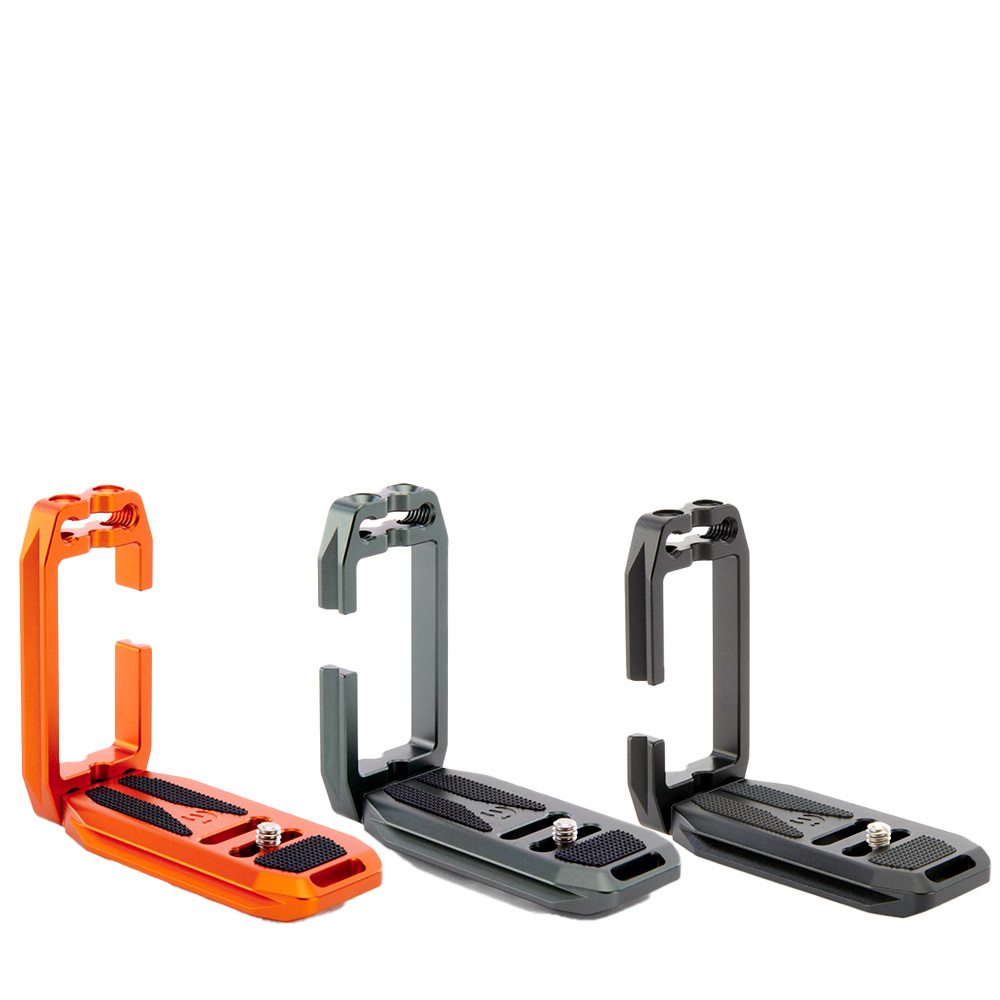
Adjusts to fit most small and mid-sized mirrorless cameras, and is well priced too
Read more below
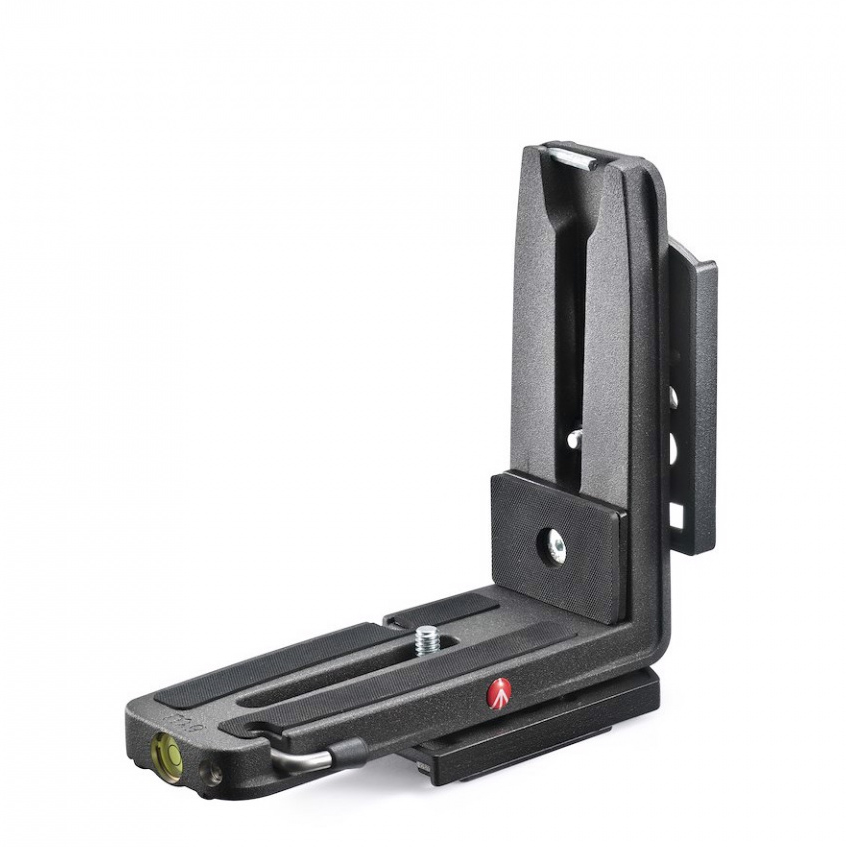
An oversized universal bracket, this works best with larger pro DSLR and mirrorless cameras
Read more below
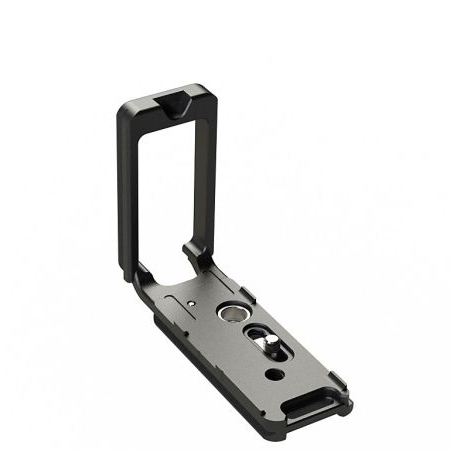
One of the oldest names in L-brackets, there's a custom model to fit (virtually) every camera
Read more below
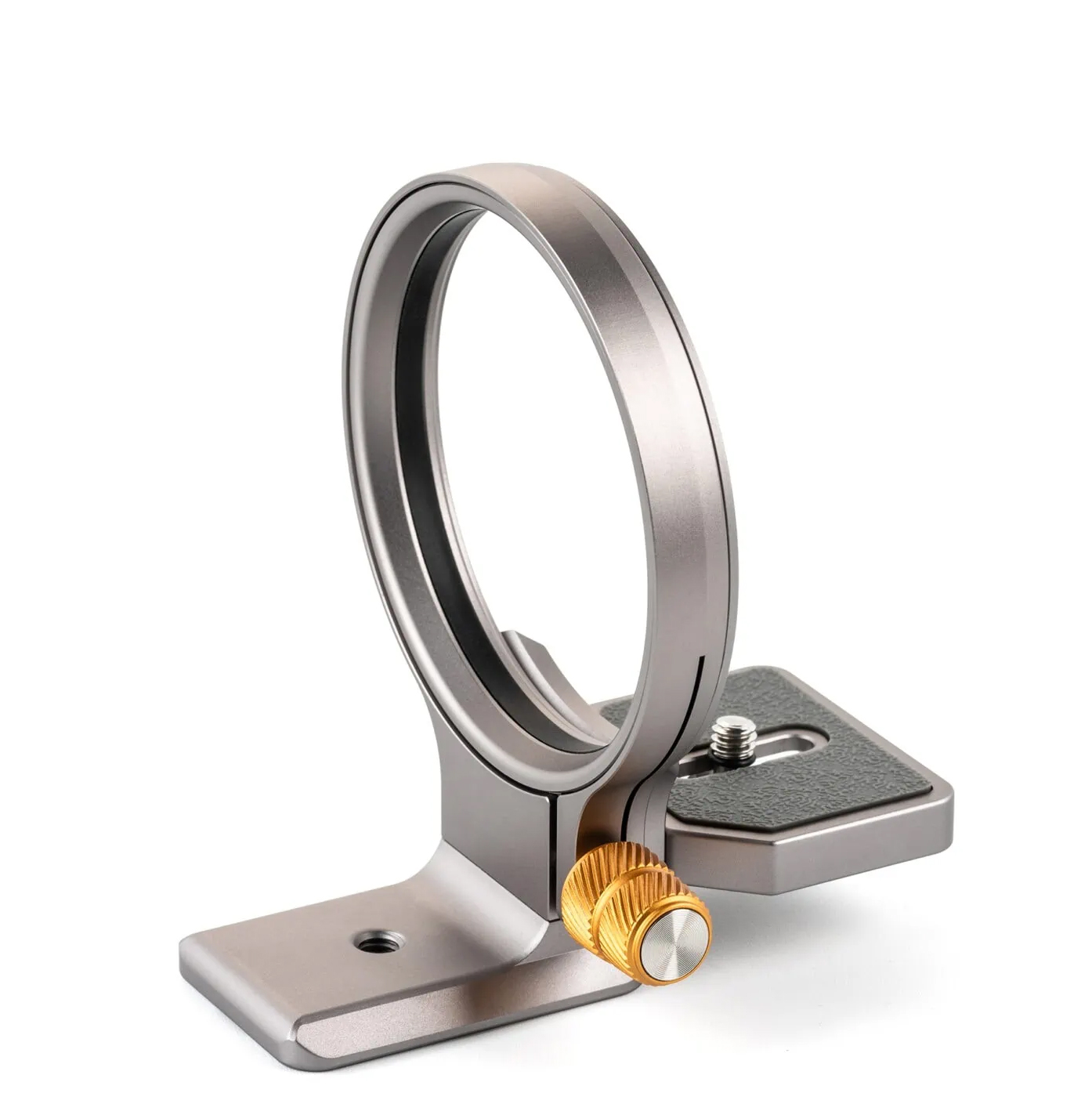
This versatile ring-mount design is even quicker to switch orientations than a regular L-bracket
Read more below
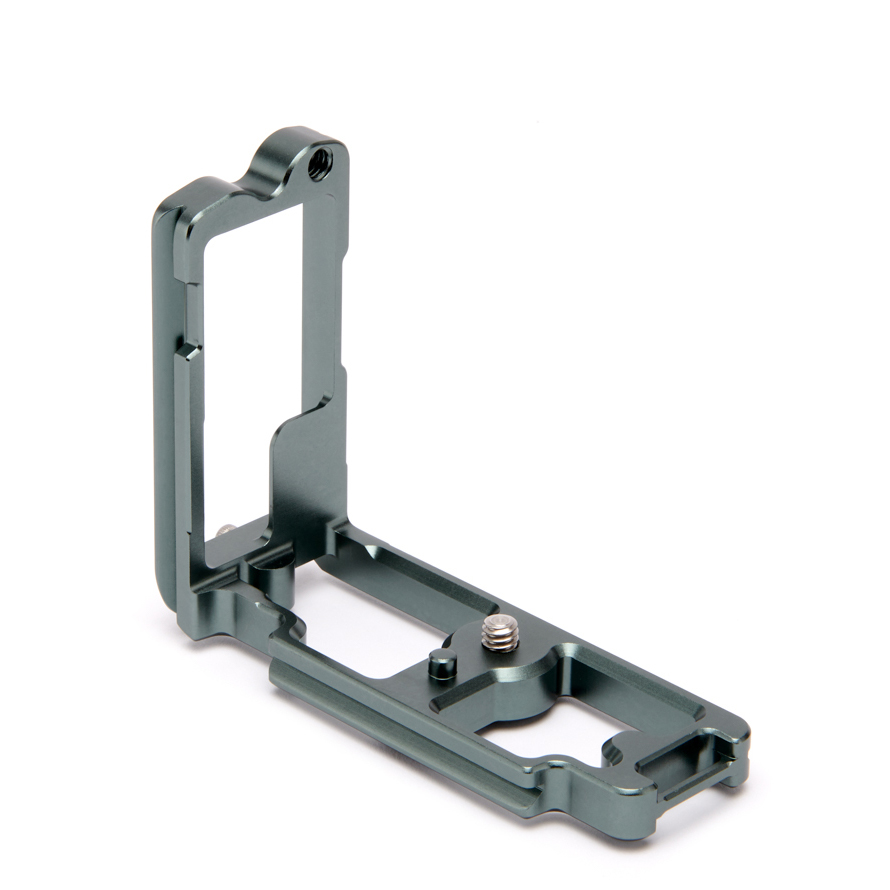
Custom-made to fit the Z7 II, Z6 II and Z5, and there are other Nikon-fit options too
Read more below
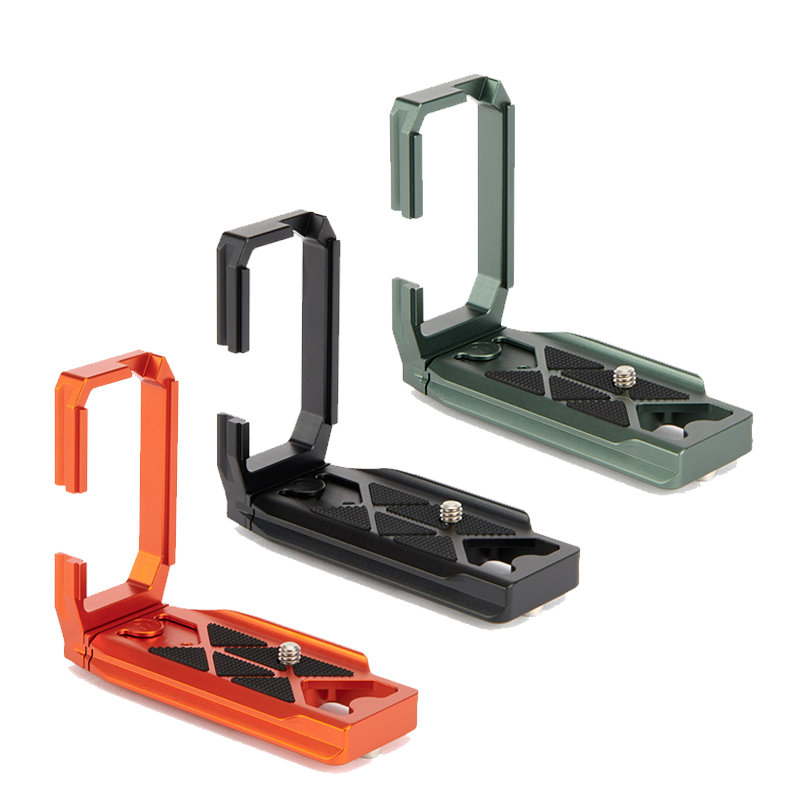
Custom-made to fit a range of Sony full-frame mirrorless cameras, including A7 III, A9 II, and A1
Read more below
Load more products ↴
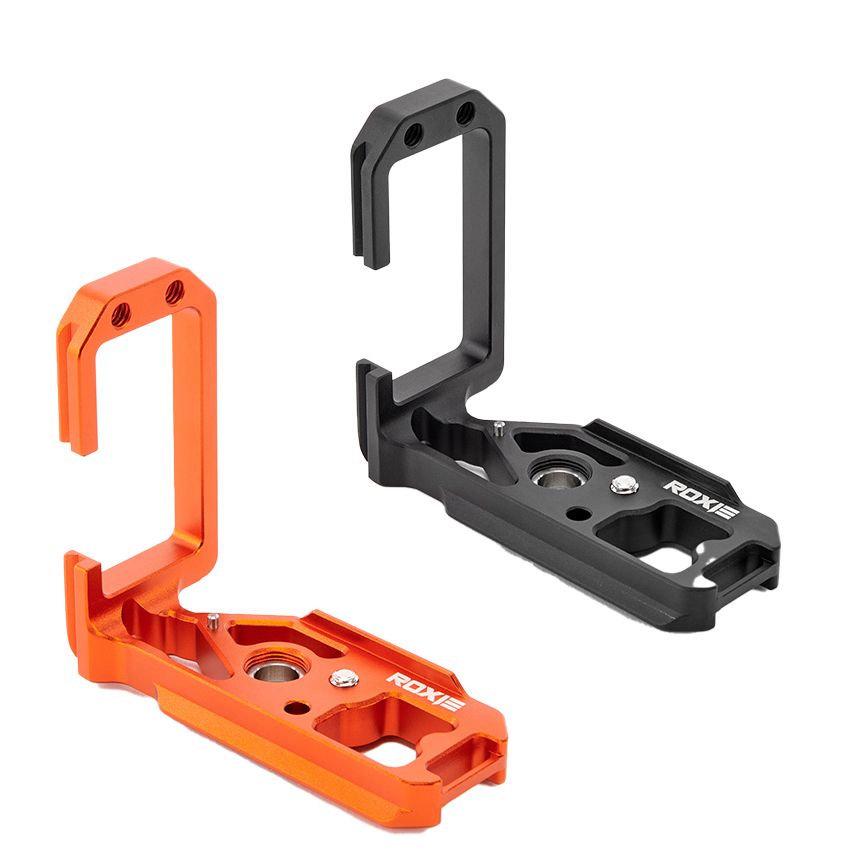
If you've got a Canon R5 or R6, this is the L-bracket for you
Read more below
The best L-bracket for your camera
Why you can trust Digital Camera World
Best universal
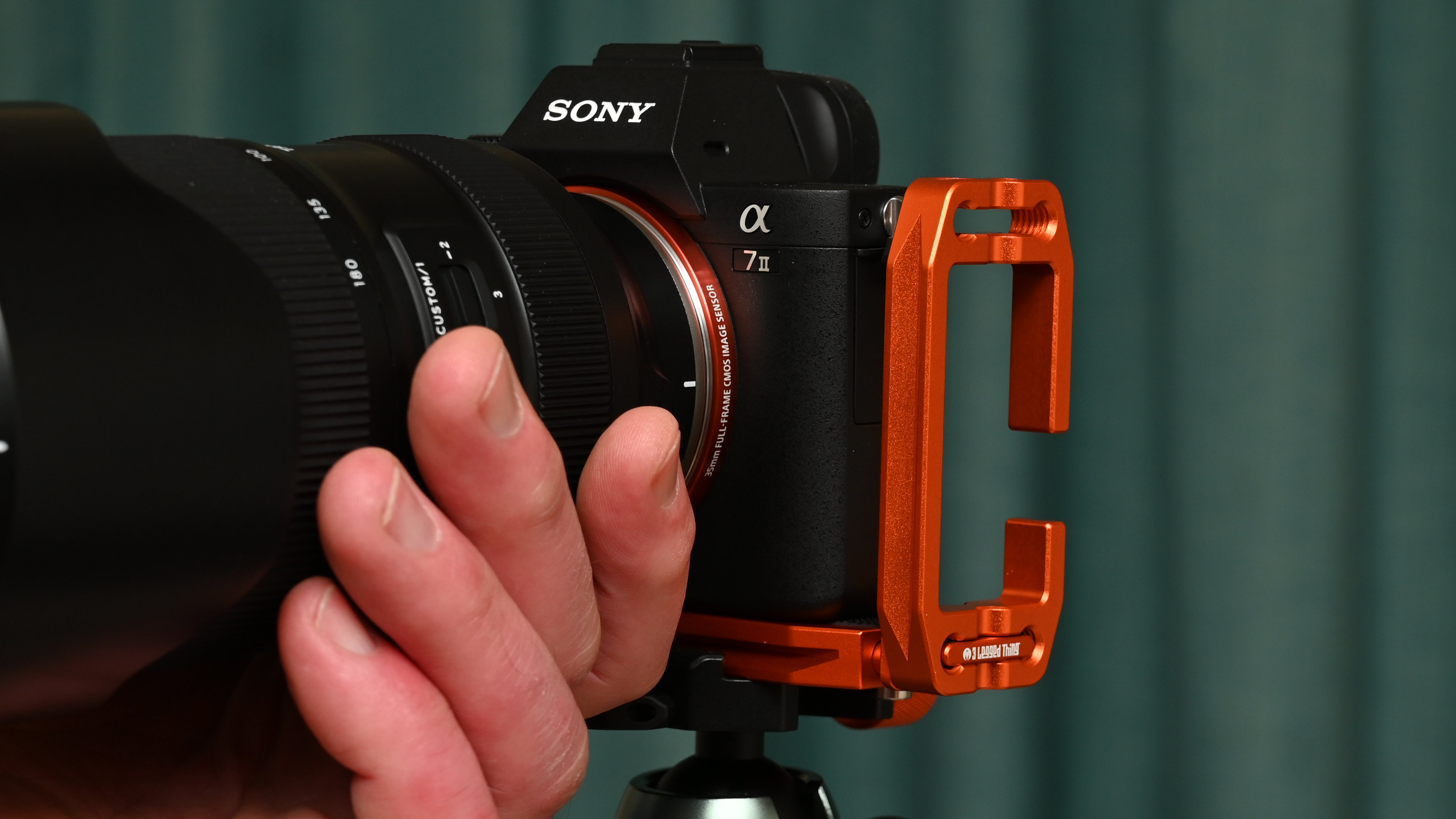

Specifications
Reasons to buy
Reasons to avoid
3 Legged Thing’s Lexie is an Arca-Swiss compatible L-bracket, with a modular construction that makes it suitable for use on many cameras - and more than its predessor the Ellie. It’s available in Copper, Metallic Slate Grey or Darkness (matte black), and is made from anodised aerospace-grade magnesium alloy, with a 1/4-inch-20 stainless steel Stagsden screw to mount it on a camera. There are also four 1/4-inch-20 threads (two in the upright plate and two in the base plate) for attaching accessories such as a light, accessory arm or monitor.
3 Legged Thing supplies the two plates of the Lexie unconnected, so the first step in using it is to slot them together and tighten the bolts before adjusting the length of the horizontal plate (if necessary) to fit your camera. This means using the tiny hex key supplied in the box, which is a little fiddly.
With this done, it should be possible to mount the camera on an Arca-Swiss-type tripod head, in either portrait or landscape orientation, without shifting the focal plane and while keeping the centre point of the camera directly above the tripod for maximum stability.
Understandably, being a Universal L-Bracket, the Lexie may not fit as snugly as a bracket that’s designed for a specific camera, but it costs much less and has the big bonus of being transferable.
See our full 3 Legged Thing Lexie review
Best for large cameras
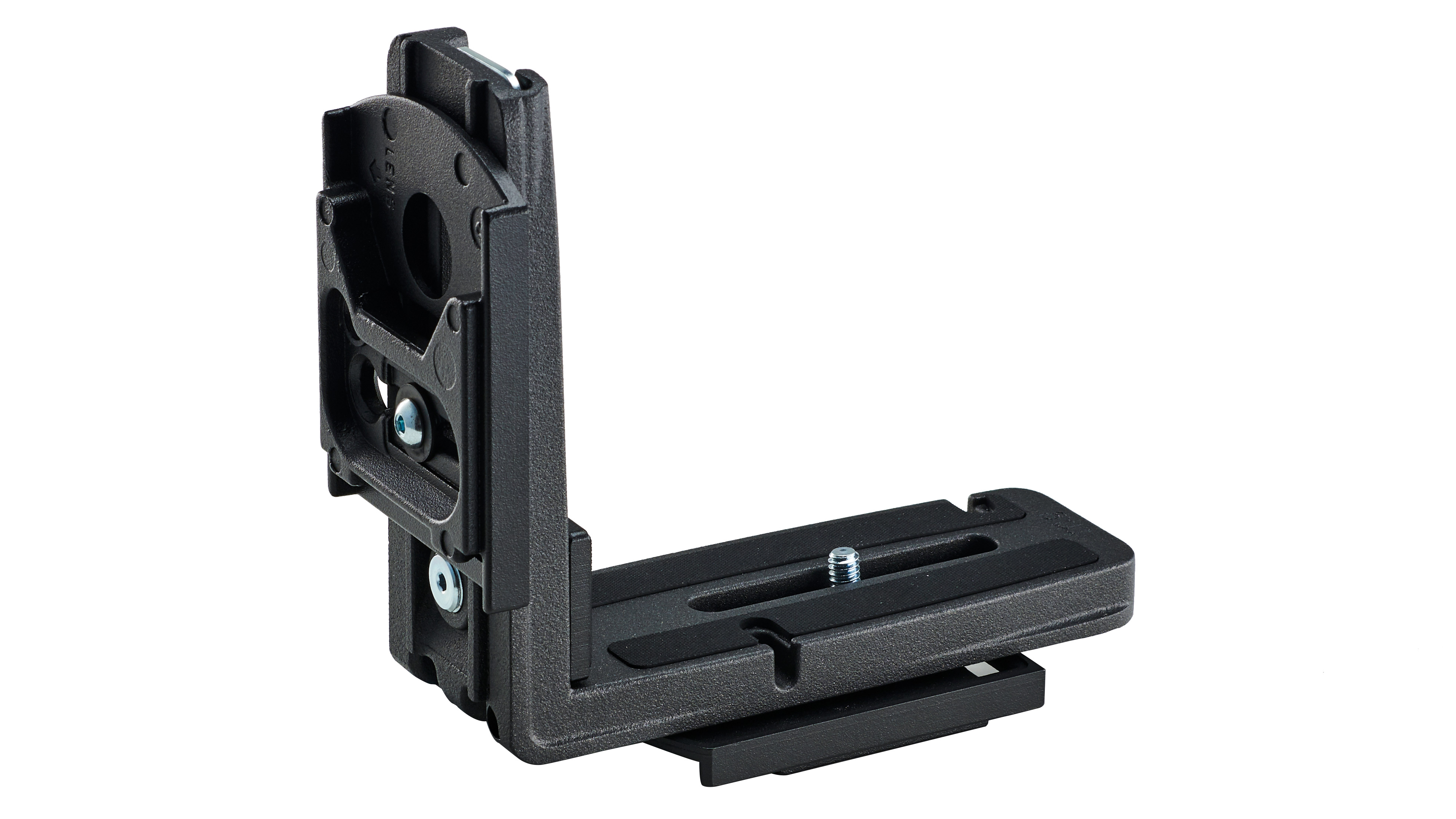
2: Manfrotto L-Bracket RC4
Specifications
Reasons to buy
Reasons to avoid
By far the most substantial bracket here, Manfrotto’s RC4 is a one-piece design and is constructed from magnesium. While the other brackets come with an Arca Swiss fitting, the RC4 is compatible with Manfrotto’s 410PL quick-release plate; Arca Swiss plates slide along the length into a tripod mount, while this clicks into a fixed position on the tripod head. Further variations are the Q2, fitted with 200PL-14 plates, and the Q5, which uses 501PL plates.
The RC4 comes with a Y-shaped ruler to measure the distance between the lens barrel and plate; the idea is you set the same distance between the lens and both the base and side plates, so the centre of the lens is perfectly lined up in both portrait and landscape orientation. Other features include a level bubble, and a pullout peg to prevent the camera rotating.
The RC4 dwarfed my test Z7 to the point of being difficult to use the controls, and even felt like overkill on the D850. This bracket is really designed for the squarer shape of bigger pro-grade cameras, such as the Nikon D6, or when a battery grip is fitted to the camera.
Best classic L-bracket

3: Kirk Enterprise L-bracket
Specifications
Reasons to buy
Reasons to avoid
Kirk is one of the oldest names in the L-bracket game – and is still a great choice for the serious photographer. American made, Kirk brackets are custom-made to fit a wide range of mirrorless and DSLR cameras, old and new – and they even make models that are suitable for use with optional vertical grips. When shopping for a Kirk, you need to make sure that you have picked the right one for your camera – as there are lots of options available.
Best ring bracket
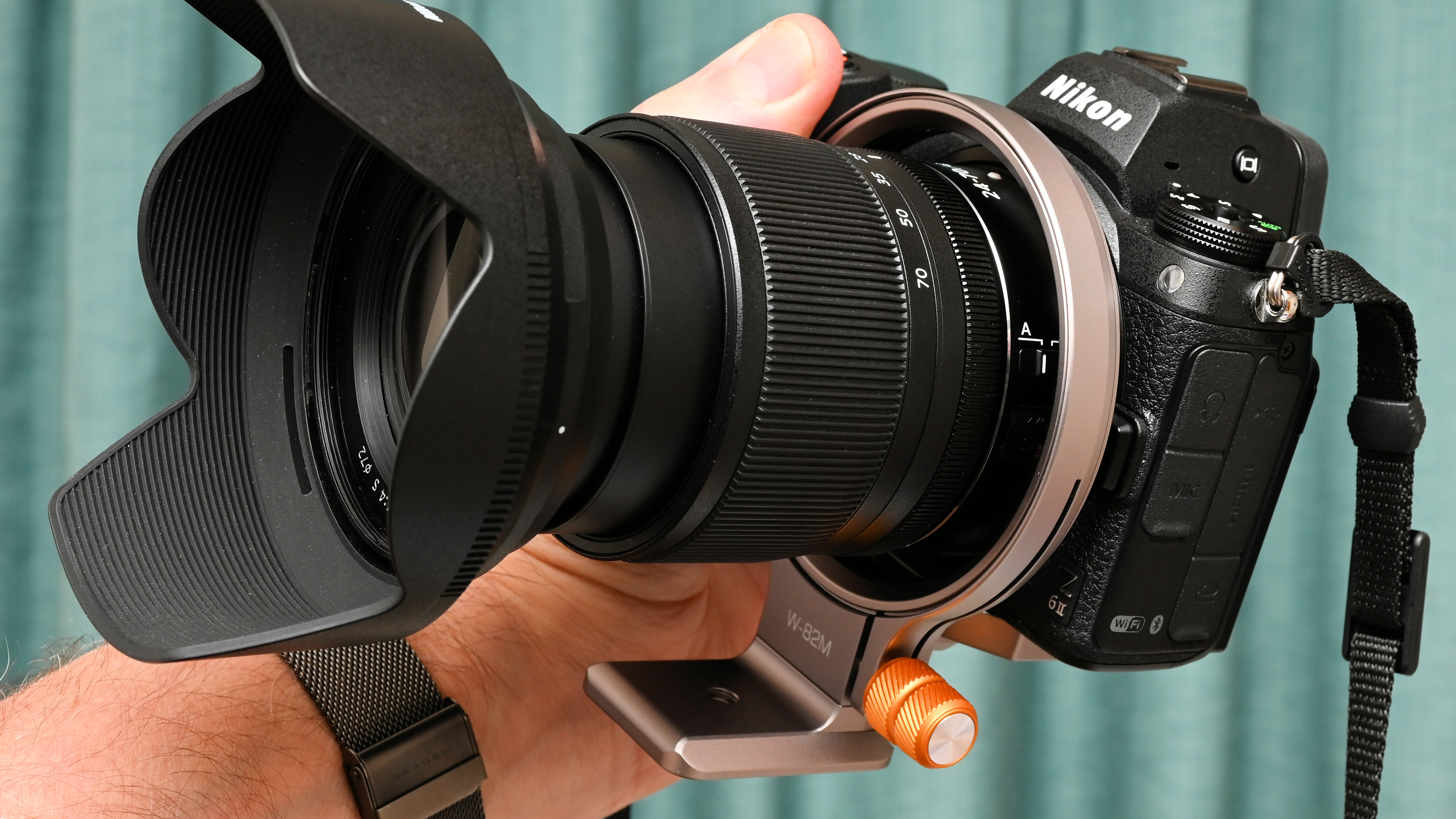

Specifications
Reasons to buy
Reasons to avoid
The NiSi Wizard Camera Bracket is rather different from a regular L-bracket. Here, the camera mounting plate sits within a circular ring that can be freely rotated within a fixed circular mount that attaches to the tripod. As such, switching from landscape to portrait orientation is even quicker than using an L-bracket; rather than physically removing the camera from the tripod to reorientate it, you simply unlock the inner ring via a knob, rotate the whole shebang, and lock it again, the whole operation taking a fraction of a second – useful when time is of the essence, such as shooting a rapidly disappearing sunset.
While there are 90-degree click-stops to make getting the camera level in other orientations easy, you can also shoot off kilter, should you wish, for the 'Dutch tilt' look, or even upside down – ideal for low-level shooting when the camera is suspended below the tripod.
There are several different-sized versions, ranging from 63mm to 82mm in diameter, depending on your preferred camera/lens combo, so it isn't quite the one-size-fits-all solution of a 'universal' L-bracket. The downside of the ring design is that it can obscure Function buttons with some cameras and lenses, and block vari-angle screens in portrait orientation when using cameras that have a handgrip.
See our full NiSi Wizard Camera Bracket review
Best for Nikon
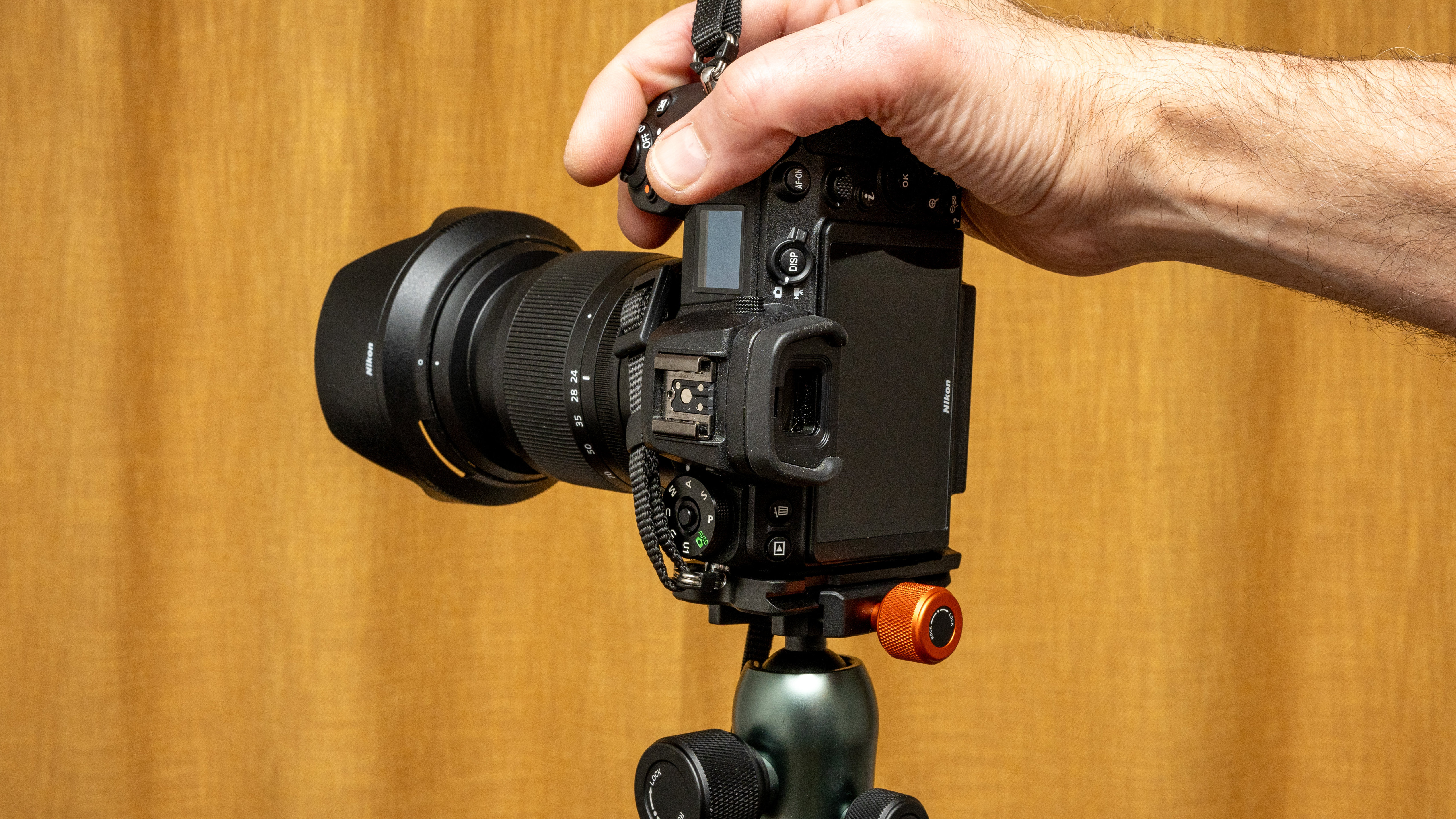

Specifications
Reasons to buy
Reasons to avoid
The Zelda is a custom-fit bracket that originally launched alongside the Nikon Z6 and Z7, but also fits the updated Z6 II and the Z7 II, as well as the Nikon Z5 full-frame mirrorless camera, as their form factors are virtually identical. There is also a newer 3 Legged Thing Zelda QD, which offers all the benefits of the standard Zelda and adds a quick-detach socket and compatibility with Peak Design Capture Clips.
3 Legged Thing makes a range of similar custom-fit brackets for other Z-series cameras, all beginning with a 'Z': the smaller Z50 variant is the 3-Legged Thing Zayla (note this doesn't fit the updated Z50 II), the larger Z8 gets the Zooey and the Z9 has the Zaara, and they fit their host cameras just as snuggly. You can apply the general points about the Zelda in this guide to these other Nikon-fit brackets.
Unlike universal aluminum brackets, this is crafted from a single piece of metal; with no joins, there shouldn’t be any danger of the right angle sagging over time. The camera connection screw doesn’t slide along the frame but is fixed in place; a notch next to it slips into a recess on the underside of Z-system full-frame bodies, ensuring that the camera is perfectly lined up.
The open side plate is designed to fit the ports of the Z cameras precisely, and there’s also a screw hole for attaching accessories. It fits the Z cameras so well that it’s the obvious choice if you own one of these mirrorless machines.
The downside is, of course, that it won’t fit any other camera you might have – now or in the future, so if you upgrade to a new camera, you'll have to splash out on a new L-bracket too.
See our full 3 Legged Thing Zelda review
Best for Sony
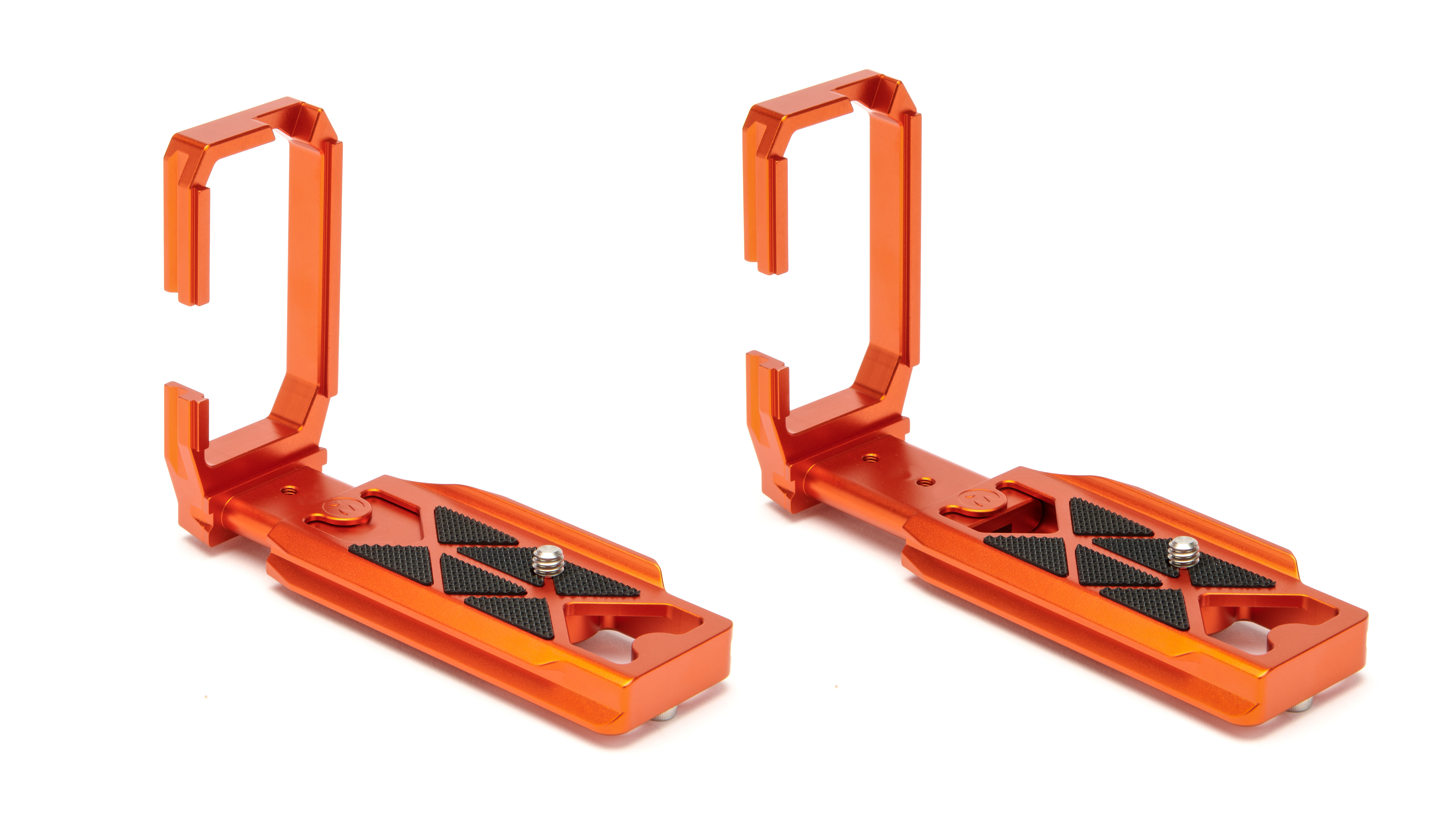
6: 3 Legged Thing Alfie
Specifications
Reasons to buy
Reasons to avoid
The Alfie is custom-made to fit a range of Sony full-frame mirrorless camera. Compatible models include the A7 III, A7 IV, A7R III, A7R IV, A7S III, A9 II, and A1. The bracket is designed so that the battery door can be opened when installed – and also allows for the flip-out screen to be angled and rotated. A neat addition is that there is supplied attachment that makes it easier for you to use the bracket whilst tethering the camera to a computer.
Best for Canon
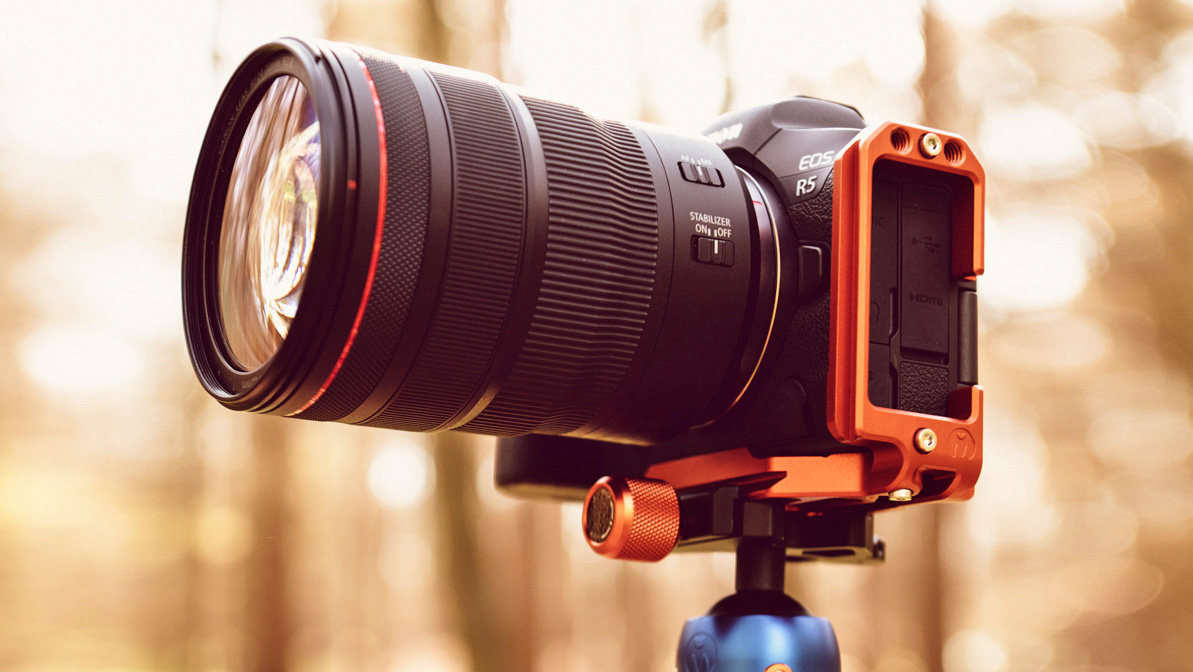
7: 3 Legged Thing Roxie
Specifications
Reasons to buy
Reasons to avoid
This is a dedicated bracket for use on the Canon EOS R5, R6, R6 Mark II, and R5 C. As with other 3 Legged Thing custom models, the design allows you access to the side ports, the battery compartment, and the rotating screen. Once again, you get a choice of three different colors.
L-bracket: things to look out for
1. A universal bracket offers flexibility to upgrade your camera, but a custom-fit bracket ensures a perfect fit.
2. Most L-brackets are Arca Swiss-compatible: if your tripod head doesn’t have this mount, it won’t fit.
3. Designs that enable you to access the battery door are handy should you run out of juice mid-shoot.
4. Some brackets obscure the connection ports, which may be a problem if you like to shoot tethered. It may be preferable to use a wireless remote, rather than a cable release.
5. An L-bracket often obstructs the battery compartment of the camera – insert fully charged batteries before you attach the bracket to save you time disassembling the setup during your shoot.
6. Take advantage of your bracket and don’t move the head once it’s level (excluding pivot functions). Adjust the legs if you need to re-level your camera.
7. Rubber strips on the base plate prevent scratches and scrapes on the underside of your camera.
8. Larger lenses often come packaged with a rotatable lens collar, fitted with a tripod screwthread. This is a better option to an L-bracket for these front-heavy setups as it reduces strain on the lens mount.
Get the Digital Camera World Newsletter
The best camera deals, reviews, product advice, and unmissable photography news, direct to your inbox!
Matthew Richards is a photographer and journalist who has spent years using and reviewing all manner of photo gear. He is Digital Camera World's principal lens reviewer – and has tested more primes and zooms than most people have had hot dinners!
His expertise with equipment doesn’t end there, though. He is also an encyclopedia when it comes to all manner of cameras, camera holsters and bags, flashguns, tripods and heads, printers, papers and inks, and just about anything imaging-related.
In an earlier life he was a broadcast engineer at the BBC, as well as a former editor of PC Guide.
- Adam WaringGuides Editor

